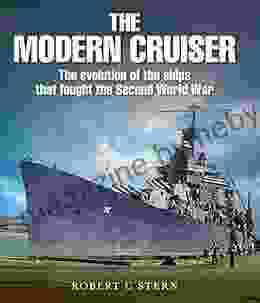The Second World War stands as a pivotal moment in modern history, a global conflict that shaped the course of the 20th century. At the heart of this titanic struggle lay the mighty ships of the world's navies, vessels that ranged from colossal battleships to nimble destroyers, each playing a critical role in the outcome of the war. This article delves into the fascinating evolution of these warships, exploring the technological advancements, design changes, and strategic considerations that shaped their development during this tumultuous period.
Battleships: Titans of the Sea
Battleships, the behemoths of the naval fleets, were the embodiment of maritime might. These colossal vessels boasted massive armament, with multiple large-caliber guns capable of delivering devastating broadsides. Their thick armor provided protection from enemy fire, making them seemingly impervious to attack. Battleships served as the backbone of naval fleets, providing firepower, protection, and a sense of command.
4.4 out of 5
| Language | : | English |
| File size | : | 40912 KB |
| Text-to-Speech | : | Enabled |
| Screen Reader | : | Supported |
| Enhanced typesetting | : | Enabled |
| X-Ray | : | Enabled |
| Word Wise | : | Enabled |
| Print length | : | 610 pages |
| Lending | : | Enabled |
The lead-up to World War II saw a flurry of battleship construction, with nations vying to build the largest and most powerful vessels. The Japanese Yamato-class battleships, with their unprecedented displacement and armament, stood as testaments to the relentless pursuit of naval supremacy. However, as the war progressed, the vulnerability of battleships to air attacks became painfully evident. The sinking of the British battleship Prince of Wales and the Japanese battleship Yamato by carrier-based aircraft signaled the twilight of these once-unstoppable behemoths.
Aircraft Carriers: Masters of the Air
Aircraft carriers emerged as a game-changer in naval warfare during World War II. These floating airfields allowed navies to project air power far from their home bases, enabling attacks on distant targets and the control of vast stretches of ocean. The development of carrier-based aircraft, such as the American Grumman F6F Hellcat and the Japanese Zero, gave aircraft carriers an圧倒的な air superiority.
The Battle of Midway in 1942 proved the decisive moment that established the dominance of aircraft carriers. The devastating American victory, achieved primarily through carrier-based air attacks, shattered the myth of battleship invincibility and ushered in a new era of naval warfare. From that point forward, aircraft carriers became the centerpiece of naval fleets, their airpower capable of sinking ships, intercepting enemy aircraft, and providing support for amphibious operations.
Cruisers: Multipurpose Warriors
Cruisers, with their versatility and firepower, occupied a vital role in naval operations during World War II. These vessels were smaller and faster than battleships but still carried significant armament, including guns, torpedoes, and anti-aircraft weaponry. Cruisers served as escorts for larger ships, conducted scouting missions, and provided gunfire support for amphibious landings and shore bombardment.
The evolution of cruisers during the war focused on enhancing their anti-air defenses and torpedo armament. The American Brooklyn-class cruisers, with their advanced radar systems and powerful anti-aircraft batteries, proved highly effective in countering enemy aircraft. Japanese cruisers, such as the Myoko-class, carried a formidable torpedo armament, making them deadly adversaries in night battles.
Destroyers: Fleet Protectors
Destroyers, the nimble workhorses of the naval fleets, played a pivotal role in anti-submarine warfare and fleet defense. These small, fast vessels were equipped with torpedoes, depth charges, and anti-aircraft guns, making them ideal for hunting submarines and protecting larger ships from air and surface attacks. Destroyers often operated in flotillas, using their speed and maneuverability to outmaneuver and overwhelm enemy vessels.
The development of destroyers during World War II saw improvements in their sonar systems, radar, and anti-submarine weapons. The British Type 21 destroyer, with its advanced sonar and hedgehog anti-submarine mortar, became a highly effective submarine hunter. American Fletcher-class destroyers, with their high speed and potent anti-aircraft armament, proved invaluable in protecting aircraft carriers from enemy air attacks.
Submarines: Stealthy Predators
Submarines, the underwater wolves of the sea, played a significant role in disrupting enemy shipping lanes and carrying out covert missions. These vessels operated stealthily beneath the waves, using torpedoes to sink enemy ships and launching amphibious raids. The development of diesel-electric propulsion systems and improved torpedo technology made submarines more lethal and harder to detect.
The German U-boat campaign during World War II was particularly effective, with submarines sinking countless Allied merchant ships. The American Gato-class submarines, with their long range and advanced sonar systems, proved equally formidable, decimating Japanese shipping in the Pacific.
The Second World War witnessed a transformative evolution in the warships that fought the conflict. From the massive battleships to the nimble destroyers, each vessel played a critical role, shaping the course of battles and determining the outcome of the war. The technological advancements, design changes, and strategic considerations that drove this evolution left an indelible mark on naval warfare and continue to influence the design and operation of warships today. As we reflect on this era of maritime conflict, we marvel at the ingenuity, bravery, and sacrifice of those who served on these mighty ships, forever etched in the annals of history.
























































































